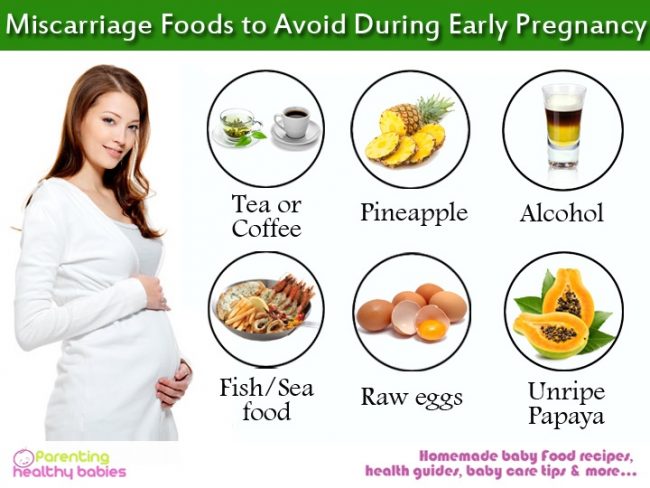Feeding milestones for babies
Discover the Basics of Feeding Your Baby
Feeding: Know the Basics
Every day, baby is growing so quickly! Their growth is powered by good nutrition and strong feeding abilities.
Feeding is more than just eating and drinking—it helps baby develop the muscles used to chew, swallow, and digest their food. Baby will go through many stages of feeding development, but all of them are important to their growth!
What is feeding?Feeding looks different at every age for babies and young children, but it is the intake of nutrition that helps us grow, develop and thrive. Most babies begin life by breast or bottle feeding, and slowly build up to solid foods.
What do stages of feeding look like?There are various feeding milestones baby will meet throughout the first 18 months. These stages help baby slowly build up to solid foods. So while they begin by consuming breastmilk or formula, baby typically graduates to purees around 4-6 months, and small solids shortly after.
Learn more about what feeding looks like at 0-3 months, 4-6 months, 7-9 months, 10-12 months, and older.
How often should baby feed?That really depends on the age, but it’s always best to try and maintain a regular feeding schedule. At a very young age, baby feeds often, in smaller quantities. Newborns typically feed every 1-3 hours (8-12 times per day), consuming about 2-3 ounces of breastmilk or formula per feeding. As baby grows, they typically can go longer between feedings.
How do you know when your baby is ready for the next stage of feeding?By following their feeding milestones (see below) and consulting with their healthcare provider. Sensory and motor development are important parts in feeding, and help baby to reach the next stage. It’s important baby develops the proper muscles needed for chewing, swallowing, and digesting before they can begin thicker liquids and small solids. Read more about how motor development impacts feeding.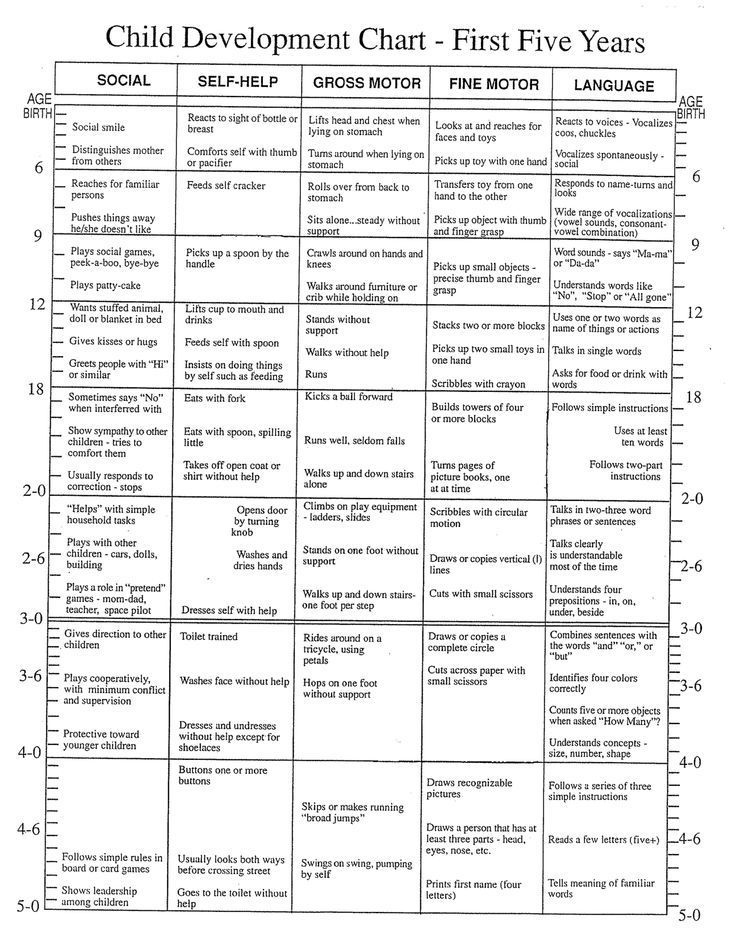
Feeding Milestones
Watch below to learn more about feeding throughout the 18 months!
0-3 MonthsAt this age, your infant is only consuming breastmilk or formula—they are not ready for thicker liquids or solids. Newborns often communicate hunger by showing signs of hunger.
It’s also important to note at this age, baby is not ready for any thicker liquids or solid foods. They also should not drink cow’s milk until they are 1 year old.
- Latches onto nipple or bottle
- Tongue moves forward and back to suck
- Drinks 2 to 6 oz. of liquid per feeding, 6x per day
- Sucks and swallows well during feeding
- Breast milk and/or formula
- A newborn’s digestive tract and control of muscles of the mouth are still developing, so they should not be eating any solid foods
- Babies often explore items by putting them in their mouth. Be aware of choking hazards.
At this age, baby may be able to start purees and cereals, as long as:
- Baby can sit up in a high chair
- Baby has good head control
- A healthcare provider has said baby is ready
- Begin and end baby’s meal with breast milk or formula while they are transitioning to solid foods.

- Alternating between the bottle and spoon can help baby connect the idea of spoon-feeding with the comfort of nursing.
Purees are best when made with fruits and vegetables that can be cooked, cooled and blended into a smooth, thin liquid. Some popular first foods to puree are:
- Carrots
- Apples
- Pears
- Squash
- Green beans
Keep in mind formula or breast milk will continue to be a key part of their nutrition until baby is one year old. However, baby should not have any cow’s milk until they are 12 months old.
- Shows interest in food
- Opens mouth as spoon approaches
- Moves pureed food from front of mouth to back
- Begins to eat infant cereals and pureed foods
- Breast milk and/or formula
- Infant cereal
- Smooth, pureed food (single ingredient only), like carrots, sweet potato, squash, apples, pears
- Homemade purees should have a thick liquid consistency
- Make batches of homemade purees and freeze in ice cube trays.
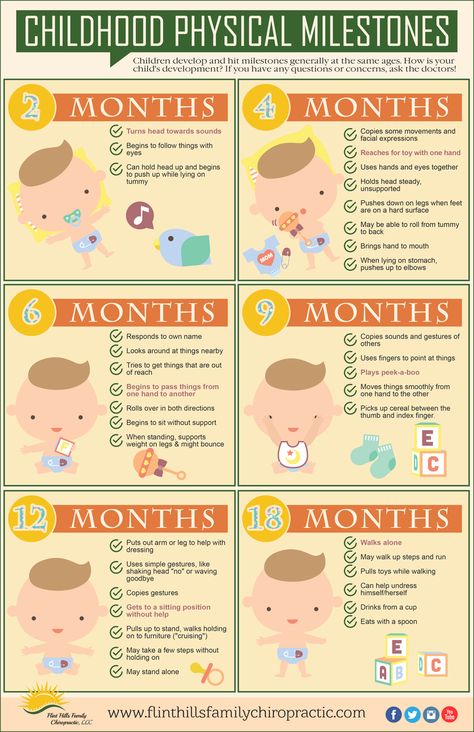 Thaw purees before feeding to your baby.
Thaw purees before feeding to your baby. - Introduce baby to one new food at a time (every 3 days)
- When transitioning to solids, try starting and ending the meal with milk/formula
- Having a stronger core and more control over their neck and head movement is important for introducing solids
As baby becomes more familiar with solids, they can begin transitioning to table foods. This typically happens around 8-9 months.
What types of food can I give baby once they have transitioned to table food?Give baby a variety of foods that are either mashed or cut into bite-sized pieces. Different textures and shapes should be provided. A few suggestions for food to give to baby include:
- Sweet potatoes
- Green beans
- Peas
- Well-cooked pasta
- Soft fruits
Avoid giving baby heavily salted, buttered, or sweetened foods.
Is there anything I should not do when starting to give baby solid foods?Do not feed baby solids from a bottle unless their healthcare provider suggests otherwise. This can drastically increase the amount of food baby eats at each feeding and cause gagging. Learning how to sit up, to use utensils, and rest in between bites are good feeding habits to develop.
This can drastically increase the amount of food baby eats at each feeding and cause gagging. Learning how to sit up, to use utensils, and rest in between bites are good feeding habits to develop.
Watch for signs baby is ready for solid foods and tips to make transitioning to solids easier.
Give baby soft, mashed, or well cooked food that is easy to swallow. Present food in small pieces to prevent choking. Baby should try one new food every three days to help detect potential food allergies.
- In a highchair, holds and drinks from bottle
- Begins to eat thicker pureed and mashed table foods
- Enjoys chew toys that can massage sore and swollen gums during teething
- Stays full longer after eating
- Starts to look and reach for objects, such as food that is nearby
- Shows strong reaction to new smells and tastes
- Breast milk and/or formula
- Pureed foods
- Yogurt
- Soft, mashed foods like baked potatoes or sweet potatoes
- Soft, bite-sized foods like:
– Mashed, hardboiled egg yolk
– Small pieces of ripe banana
– Small pieces of pasteurized cheese
– Soft breads
– Soft, cooked carrots
- When first introducing thicker purees, mix with a thin puree
- Vary thinner purees and thicker purees
- Majority of baby’s nutrition should still come from breast milk or formula
- Allow your child to play with food and get messy
- Don’t feed baby foods with added salt and preservatives
- Alternate giving baby a straw to drink from and helping baby with an open cup
- Try alternating feeding baby with spoon and letting them try to feed themself
By 12 months, baby can begin drinking from an open cup. Just remember, spills happen! Alternate between giving your little one open cups and using straws; this will help develop different mouth muscles.
Just remember, spills happen! Alternate between giving your little one open cups and using straws; this will help develop different mouth muscles.
- Finger feeds self
- Eating an increasing variety of food
- Begins to use an open cup
- Ready to try soft-cooked vegetables, soft fruits, and finger foods
- Might be ready to start self-feeding with utensils
- Enjoys a greater variety of smells and tastes
- Breast milk and/or formula
- Couscous, rice, & quinoa
- Additional finger foods:
– Scrambled egg yolk
– Beans/legumes (lentils, black beans, pinto beans)
– Ground meat
– Sliced deli meat cut into small pieces
– Strips of cheese
– Bread, toast, crackers & muffins
– Cooked pasta
- Baby should be eating 3 meals per day plus several healthy snacks
- Use chop option on food processor to serve baby the same meal you are eating at an appropriate consistency or mash with fork
- Serve snacks at consistent times so baby is hungry for meals
- Eat together at the table during mealtimes
At this age, your toddler is just getting better every day with feeding!
They should be using a cup regularly, and getting used to holding and drinking from a cup.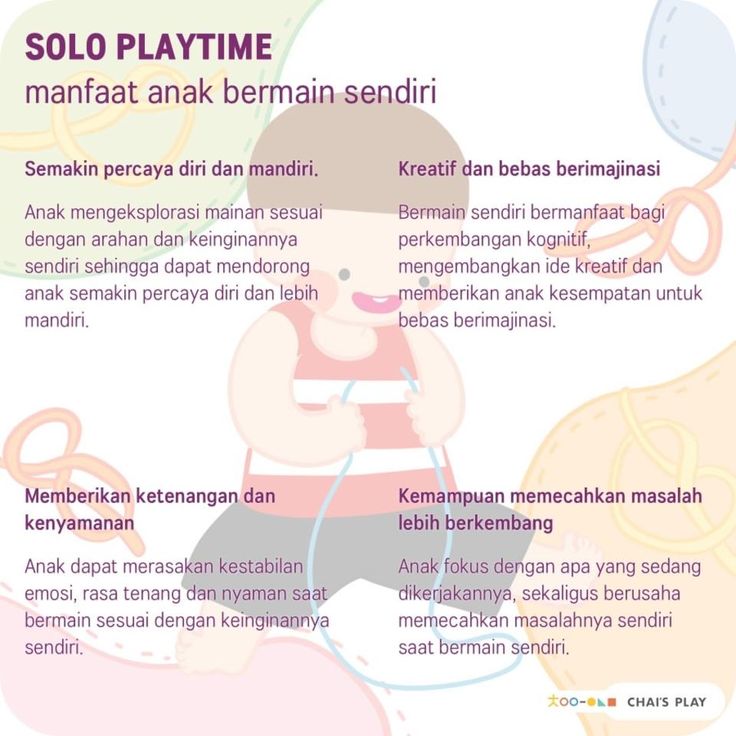
They should also be eating an increasing variety of coarsely chopped table foods.
- Can use open cup independently
- Should be able to eat most foods by 1 year and participate in family mealtime
- Increases variety of chopped table foods
- With pediatrician’s approval, milk is typically introduced at 1 year old
- Fruit cut into small cubes or strips
- Bite-sized, soft, cooked vegetables like zucchini or broccoli
- Mixed food textures: macaroni and cheese, casseroles
- Finger foods like:
– Small pieces of bread/bagel
– Shredded or small pieces of meat/tofu
– Low sugar cereal
– Soft fish
- Encourage self-feeding with utensils
- Remember that your job is to provide healthy, safe food options to your baby and your baby is in charge of how much to eat
- Common choking hazards:
– Hot dogs
– Nuts
– Whole grapes
– Popcorn
– Hard, sticky, gooey candy
Feeding Activities
What to Watch For
Some Possible Signs of Feeding Issues
- Cannot latch on to breast or bottle
- Sucks in light, quick, fluttery motions rather than taking deep, regular sucks
- Frequent spitting up and/or vomiting after feeding
- Appears hungry shortly after a feeding
- Has diarrhea or rash after feeding
- Stiff body or arching of back during a feeding
- Not following baby’s own growth curve
- Unusually short or long feedings
- Consistently rejects solid foods
- Is unable to keep food or liquid in mouth
- Difficulty chewing age appropriate food
- Does not enjoy eating a variety of foods or refuses certain food textures
- Gagging
- Coughing and/or choking while eating and/or drinking
- Frequent respiratory illnesses
If you have concerns about your child’s feeding, talk to their healthcare provider.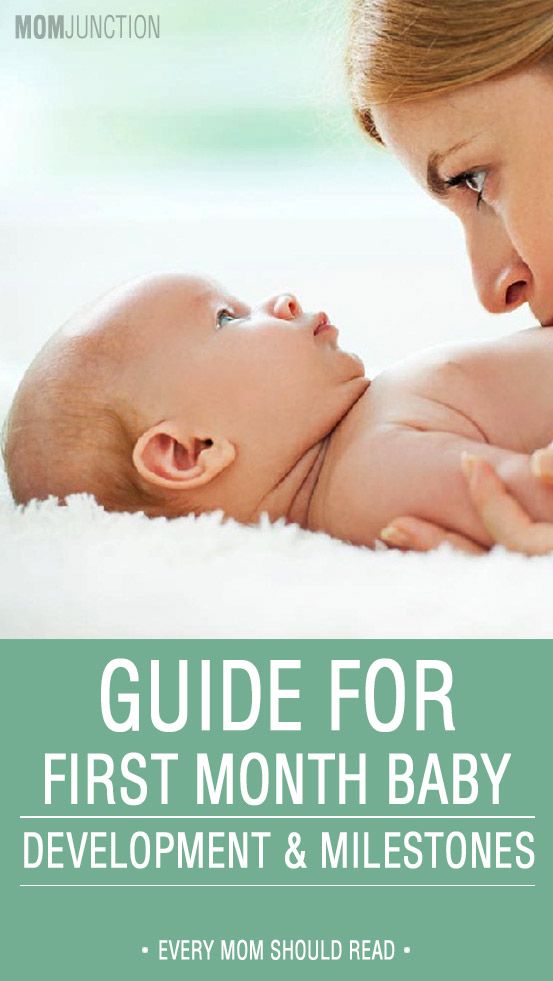 There are different types of specialists who can help children with feeding issues including:
There are different types of specialists who can help children with feeding issues including:
- Lactation Consultants
- Speech-Language Pathologists
- Occupational Therapists
A specialist may recommend specific feeding techniques, exercises, and foods to help with feeding. Each child will have their own unique goals and spending time working with them each day can help improve their ability to suck, chew, and swallow for a better feeding experience.
What to Know About Feeding Allergies
What are the symptoms of food allergies?If you notice your child has skin problems, such as rashes, hives, or swelling; stomach problems, such as nausea, vomiting and diarrhea; and/or breathing problems, these are all symptoms of food allergies. Other signs include pale skin or light-headedness.
What should I do if I think my child has food allergies?Talk to your child’s healthcare provider. They might recommend allergy testing via a skin prick or blood test or trying a special diet to help determine which food is causing the allergies.
They might recommend allergy testing via a skin prick or blood test or trying a special diet to help determine which food is causing the allergies.
Even if your child has no history of allergies, it is best to wait three days between new foods. For example, if you introduce your baby to a new food on Monday, don’t give them any other new foods until Thursday. In the event that they do have an allergic reaction, it will be easier to figure out which food was the cause.
If it is determined your child has a food allergy, keep your child away from foods containing these ingredients. Make sure to inform your child’s school and any caretakers about their allergies or medicines recommended by your child’s healthcare provider to relieve symptoms.
What are some common food allergies?Milk, eggs, peanuts, tree nuts, fish, shellfish, soy, and wheat cause 90% of food allergies. Introducing one new food every three days can help determine if a certain food is causing an allergic reaction.
Solids, Finger Foods, and More
Written by Gina Shaw
In this Article
- Baby Milestone 1: When They Can Start Solids
- Baby Milestone 2: When They’re Ready to Move From Puree to Chunks
- Baby Milestone 3: When They Can Sit in a High Chair
- Baby Milestone 4: When They Can Manage Finger Foods
- Baby Milestone 5: When They Start Using Spoons
- Baby Milestone 6: When They Can Try Highly Allergenic Foods
- Baby Milestone 7: When They Can Drink Water
- Baby Milestone 8: When They Can Completely Feed Themselves
There are many milestones that need to be achieved when a baby is ready to start to eat solid foods. Here are some of the big ones.
Baby Milestone 1: When They Can Start Solids
Most pediatricians, and the American Academy of Pediatrics, recommend introducing solid foods to babies when they are between ages 4 and 6 months. That’s when they start to lose the “tongue-thrust reflex” or extrusion reflex, which is important for sucking the breast or bottle when they are younger, but interferes with feeding.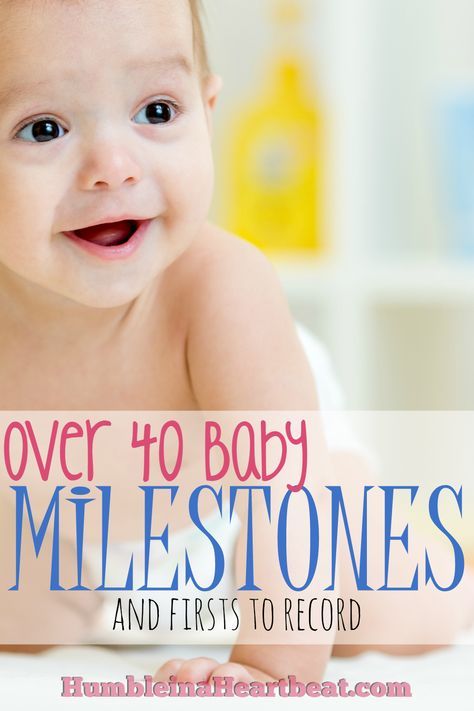 Babies at this point can also lift their heads up independently and hold their necks high.
Babies at this point can also lift their heads up independently and hold their necks high.
If your baby is around this age, can sit up well with support, and shows interest in the foods they see you eating, it’s probably a good time to venture into feeding your baby solid food. If your baby is exclusively breastfed, it is recommended that you wait until they are 6 months to start solids.
Baby Milestone 2: When They’re Ready to Move From Puree to Chunks
“Chunking up” babies’ food is a process -- obviously, they shouldn’t go straight from rice cereal to raisin bran. But after the first few weeks of adjusting to eating rather than just drinking their food, your baby should be ready to handle a little more texture in solid foods.
Introduce new textures slowly. Good starters are mashed bananas or mashed avocados. You can also use the “staged” store-bought baby foods -- going from the smooth puree of stage 1 to the slightly thicker stage 2 and then the chunkier stage 3 by around 9 months of age.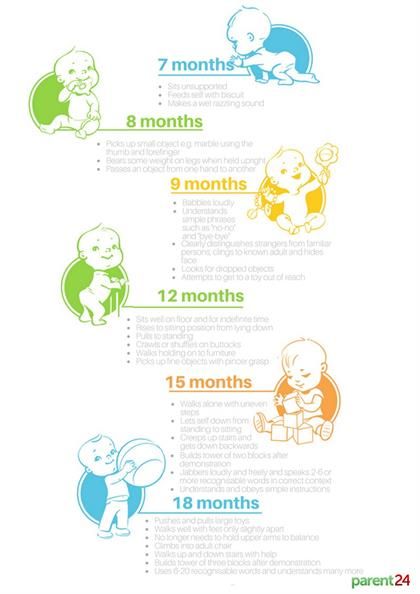 (Babies don’t necessarily have to have a lot of teeth to handle more texture in their foods -- they can often gum soft foods very well!)
(Babies don’t necessarily have to have a lot of teeth to handle more texture in their foods -- they can often gum soft foods very well!)
Baby Milestone 3: When They Can Sit in a High Chair
When babies are ready to eat solid foods, they can sit upright with support and hold up their head and neck. They're capable of sitting in a high chair! That's a serious milestone, but you'll need to follow these safety rules: Always buckle a baby into their chair for safety, even if they are unable to get out with the tray in place. As they get older and become more active, they may be able to squirm out. It is a good habit to buckle a child as soon as you place them in their chair -- even if you think there's no chance they could fall out or climb out. You may get distracted for a moment, which happens really easily when we are trying to do a million things at once!
Baby Milestone 4: When They Can Manage Finger Foods
Babies between ages 7 and 11 months usually tell you they’re ready to eat more grown-up foods by trying to grab them from you.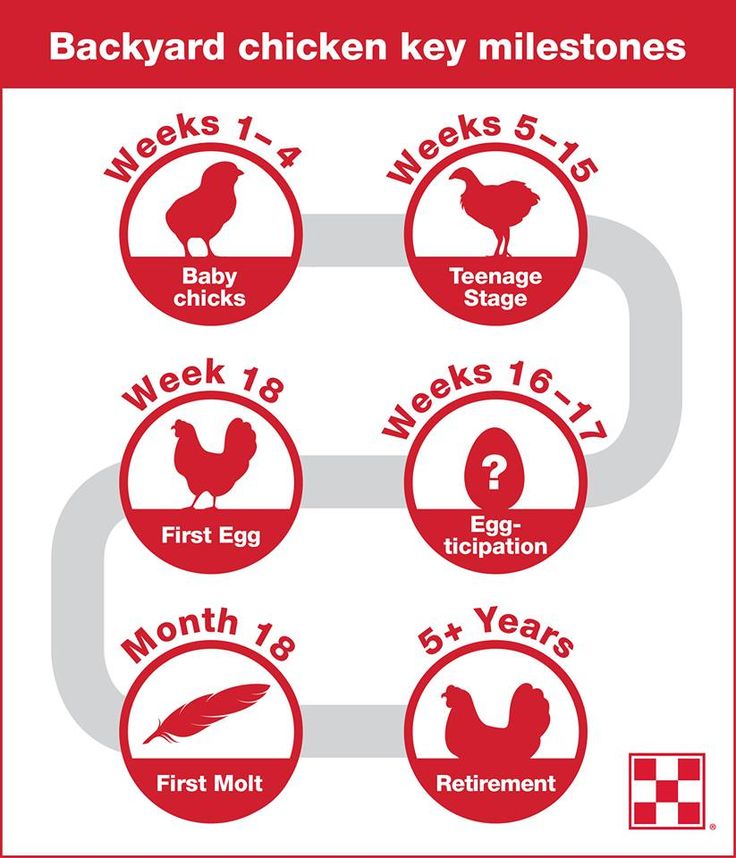 Almost any food that is healthy and nutritious and has a soft texture makes a good finger food, if it’s cut small enough: diced pasta; small pieces of well-cooked vegetables such as carrots, peas, or zucchini; and pea-sized bites of chicken or soft meat. Small, unsweetened round cereals and cereal puffs are also a good choice. Avoid feeding your baby grapes, hot dogs (even cut up), nuts, and hard candy, as they are choking hazards.
Almost any food that is healthy and nutritious and has a soft texture makes a good finger food, if it’s cut small enough: diced pasta; small pieces of well-cooked vegetables such as carrots, peas, or zucchini; and pea-sized bites of chicken or soft meat. Small, unsweetened round cereals and cereal puffs are also a good choice. Avoid feeding your baby grapes, hot dogs (even cut up), nuts, and hard candy, as they are choking hazards.
At first babies “rake” food into their hand, but soon they develop the “pincer grasp” that allows them to pick up small objects between thumb and forefinger. At that point, your baby can become a pro at self-feeding, so encourage finger foods and let your baby explore!
Baby Milestone 5: When They Start Using Spoons
Almost as soon as babies adjust to being fed with a spoon, they'll want to hold and grab the spoon themselves and put it in their mouths. That doesn't mean they're graceful, of course.
Most babies don’t learn to use a spoon effectively until after their first birthday, but let a younger baby who’s interested give it a whirl for practice. Try giving them a soft-tipped spoon to hold while you feed them with another. They can get used to holding the spoon themselves and will also be distracted from grabbing yours.
Try giving them a soft-tipped spoon to hold while you feed them with another. They can get used to holding the spoon themselves and will also be distracted from grabbing yours.
When you think they are ready to actually navigate the spoon into their mouth, try thicker, stickier foods like yogurt, mashed potatoes, or cottage cheese. Another tip: Put some cream cheese on the spoon and then a few pieces of O-shaped cereal on top. The cream cheese won’t fly everywhere, and the baby can get the experience of actually getting the cereal into their mouth.
Expect a mess! Use a plastic or other waterproof bib, and put a mat under the high chair to make cleanup easier.
Baby Milestone 6: When They Can Try Highly Allergenic Foods
Some pediatricians still recommend waiting until children are at least age 1 before offering them certain foods that are considered highly allergenic, like eggs or fish. But current research doesn’t demonstrate any benefit to waiting past a certain age to introduce these foods, unless you have a significant family history of food allergies or other reasons to believe your baby may be predisposed to them.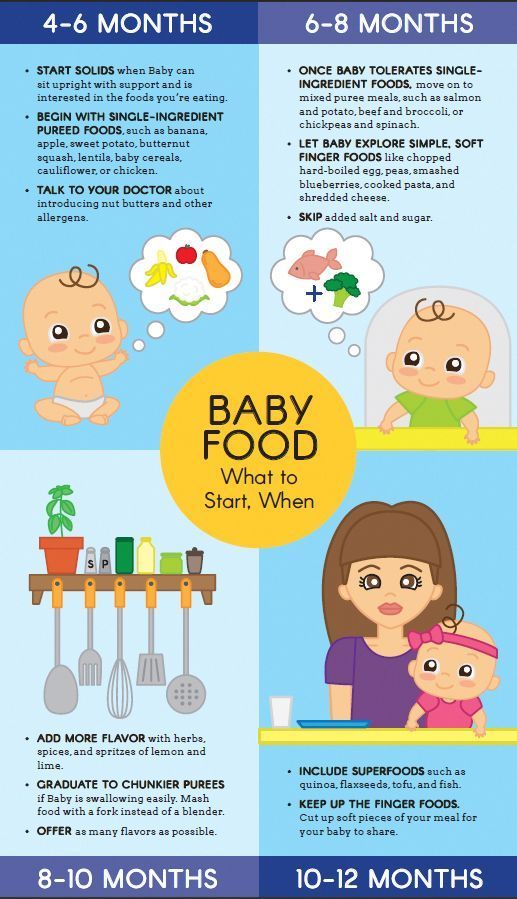
There is no evidence that introducing highly allergenic foods to children under age 1 makes them any more likely to be allergic to them, and the American Academy of Pediatrics (AAP) now says it’s fine to give these foods before the baby's first birthday. Many pediatricians are still very cautious about shellfish and peanuts, however, because allergic reactions to these foods can be particularly dangerous.
Baby Milestone 7: When They Can Drink Water
Babies don't need water during their first 6 months of life. They get all the water they need from breast milk or baby formula. Babies under age 6 months should not be given any water at all, because it’s easy to fill up their tiny stomachs -- and they should be filling up on the nutrients they receive from the milk to grow. Once they start eating mostly solid foods, around age 9 months, they can start water with meals using a sippy cup.
If your older baby shows an interest in water that you’re drinking, there’s no harm in letting them have a few sips.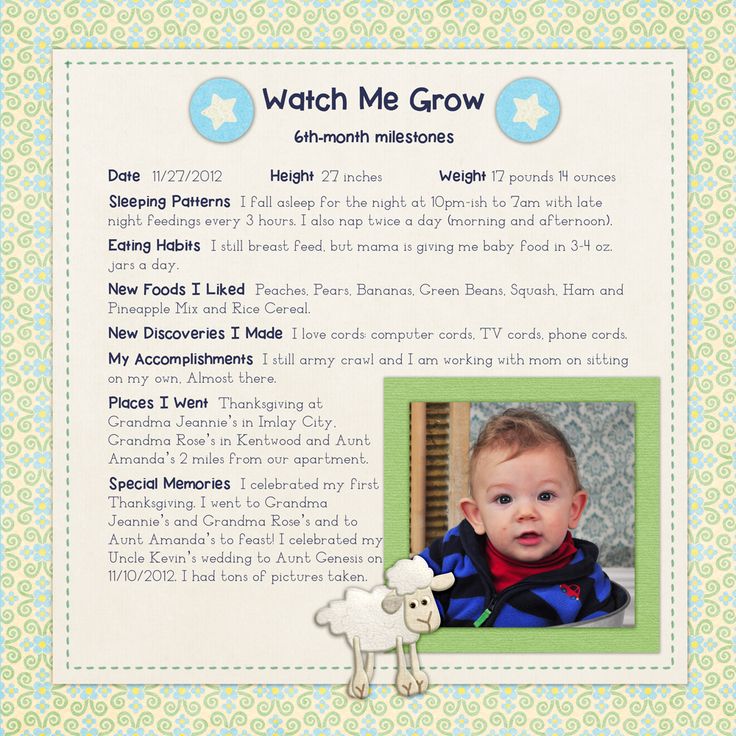 Just don’t let it replace the nutritious breast milk or formula they should be getting.
Just don’t let it replace the nutritious breast milk or formula they should be getting.
Baby Milestone 8: When They Can Completely Feed Themselves
Mastering eating with utensils is a long process. Most babies do not become really skilled at it until they are well past their first birthday. Encourage your child to practice safely, and again, be prepared for a little mess. (How else will you get the “oatmeal in the hair” pictures that will embarrass them years later?)
Breastfeeding a newborn | What to Expect in the First Week
The first week of a baby's life is a wonderful but hectic time, especially if you haven't breastfed before. Our breastfeeding tips will help you settle in as quickly as possible
Share this information
The first time after childbirth, mothers are often confused. The body is still recovering, and you are already starting to get to know your newborn baby. The emotional state during this period can be unstable, especially between the second and fifth day, when many women have milk 1 and at the same time postpartum depression begins 2 . In addition, people around often expect (and demand) that a woman come to her senses as soon as possible and become a “super mom”. But the best thing to do this first week is just to be with your baby and get breastfeeding going.
The emotional state during this period can be unstable, especially between the second and fifth day, when many women have milk 1 and at the same time postpartum depression begins 2 . In addition, people around often expect (and demand) that a woman come to her senses as soon as possible and become a “super mom”. But the best thing to do this first week is just to be with your baby and get breastfeeding going.
When should I start breastfeeding my newborn?
Try to breastfeed your baby within the first hour after birth. When the baby latch onto the breast and begins sucking rhythmically, it stimulates the mammary gland cells and starts milk production. 1 It is not for nothing that this time is called the “magic hour”!
“Ideally, the baby should be placed on the mother's stomach immediately after birth so that it can immediately attach to the breast. He won't necessarily eat, but he should be able to,” explains Cathy Garbin, an internationally recognized expert on breastfeeding.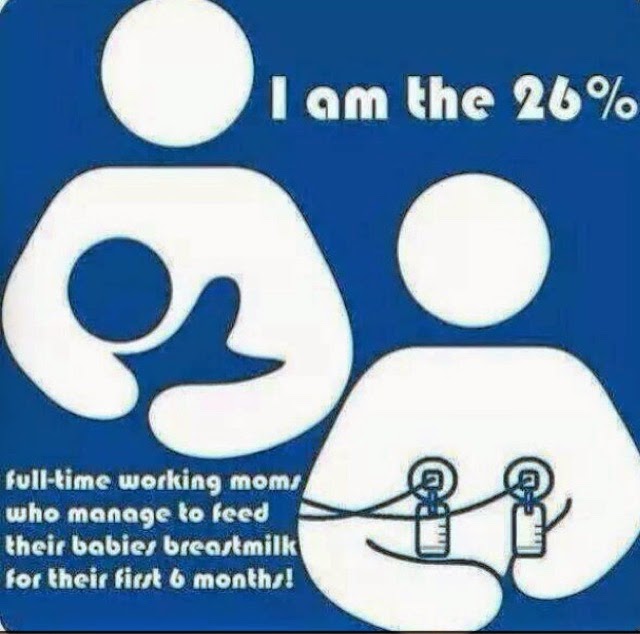
“Hold your baby and let him find the breast on his own and put the nipple in his mouth. This is called the breast-seeking reflex. On the Internet you can watch videos that show what this process looks like. If the baby does not latch onto the nipple on its own, the midwife will help to properly attach it to the breast. But for starters, it’s good to give the baby the opportunity to do it on their own. In this case, the optimal position for the mother is reclining. ”
Don't spend that special first hour of your baby's life weighing and swaddling—or at least wait until he's suckling for the first time. Enjoy hugs and close skin-to-skin contact. This promotes the production of oxytocin, the hormone of love, in you and your baby, and oxytocin plays a key role in the supply of the first breast milk - colostrum. 3
“As soon as the obstetricians were convinced that our son was healthy, the three of us — me, my husband and our baby — were left to give us the opportunity to get to know each other. It was a very special hour - an hour of awkwardness, turbulent emotions and bliss. During this time, I breastfed my son twice, ”recalls Ellie, a mother of two from the UK.
It was a very special hour - an hour of awkwardness, turbulent emotions and bliss. During this time, I breastfed my son twice, ”recalls Ellie, a mother of two from the UK.
Did you know that breastfeeding helps to recover after childbirth? This is because oxytocin stimulates uterine contractions. In the first hours after childbirth, this contributes to the natural release of the placenta and reduces blood loss. 4
What if the birth did not go according to plan?
If you had a cesarean section or other complications during childbirth,
You can still make skin-to-skin contact with your baby and breastfeed him in the first hours after birth.
“If you can't hold your baby, have your partner do it for you and make skin-to-skin contact with the baby. This will give the baby a sense of security, care and warmth so that he can hold on until you recover, ”Katie advises.
If the baby is unable to breastfeed, it is advisable to start expressing milk as early as possible and do so as often as possible until the baby is able to feed on its own.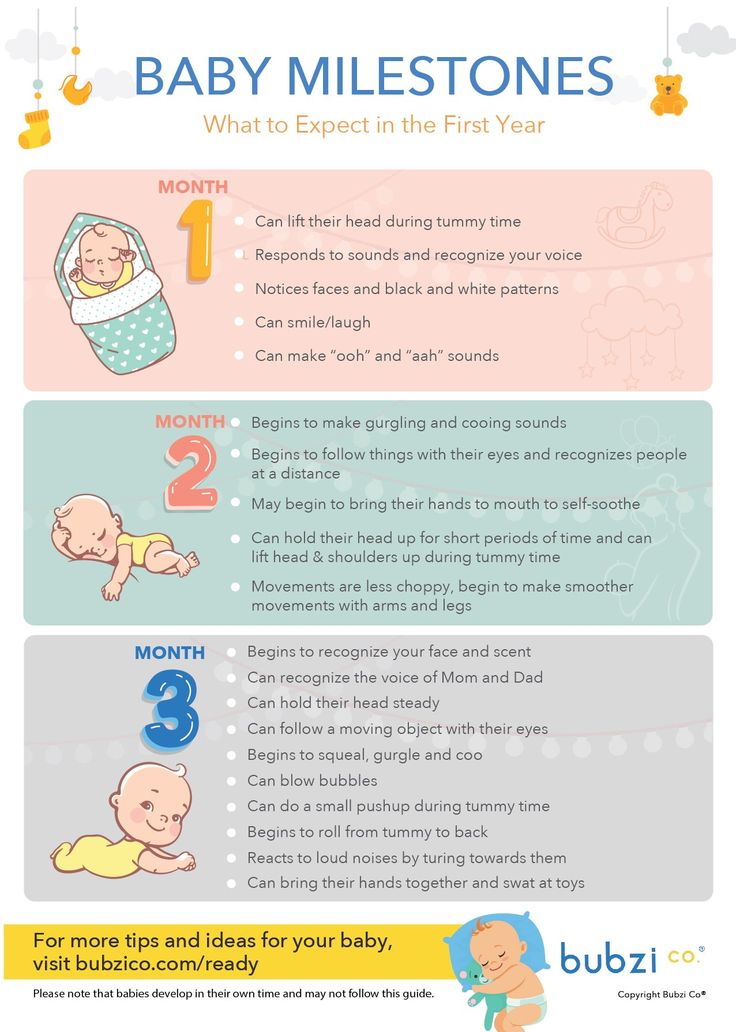 “While breastfeeding in the first hours after birth lays an excellent foundation for the future, it is not so important,” Cathy reassures. “It is much more important to start lactation so that in the future, if necessary, you can start breastfeeding.”
“While breastfeeding in the first hours after birth lays an excellent foundation for the future, it is not so important,” Cathy reassures. “It is much more important to start lactation so that in the future, if necessary, you can start breastfeeding.”
To start milk production, you can express milk manually or use a breast pump that can be given to you at the hospital. 5 And with expressed precious colostrum, it will be possible to feed the child. This is especially important if the baby was born premature or weak, since breast milk is extremely healthy.
If a baby was born prematurely or has a medical condition and cannot be breastfed immediately, this is no reason not to continue breastfeeding. “I have worked with many new mothers who were unable to breastfeed their baby for the first six weeks due to preterm labor or other reasons. Nevertheless, all of them later successfully switched to breastfeeding,” says Kathy.
Does the baby latch on correctly?
Correct breastfeeding is essential for successful breastfeeding 6 , as it determines how effectively the baby will suckle milk and hence grow and develop.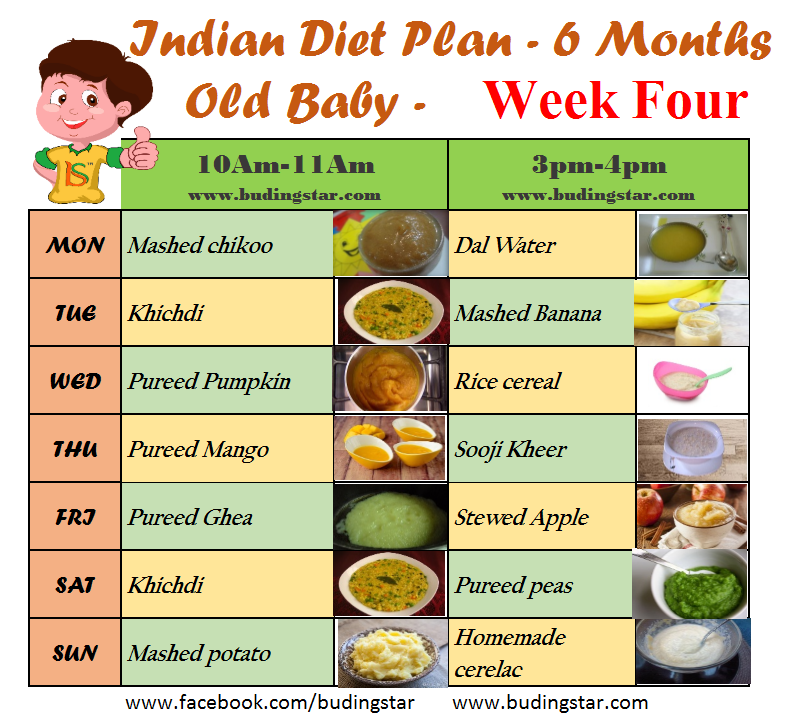 Latching on the breast incorrectly can cause sore or damaged nipples, so don't hesitate to ask your doctor to check that your baby is properly attached to the breast, even if you are told that everything is fine and you do not see obvious problems - especially while you are in the hospital.
Latching on the breast incorrectly can cause sore or damaged nipples, so don't hesitate to ask your doctor to check that your baby is properly attached to the breast, even if you are told that everything is fine and you do not see obvious problems - especially while you are in the hospital.
“While I was in the hospital, I called the doctor at every feed and asked me to check if I was breastfeeding correctly,” says Emma, mother of two from Australia. - There were several cases when it seemed to me that everything seemed to be right, but it was painful to feed, and the doctor helped me take the baby off the breast and attach it correctly. By the time I was discharged, I had already learned to do it confidently.”
When applying to the breast, point the nipple towards the palate. This will allow the baby to take the nipple and part of the areola under it into their mouth. It will be easier for him to suck if he has both the nipple and part of the areola around in his mouth. 6
6
“When a baby latch on properly, it doesn't cause discomfort and it causes a pulling sensation, not pain,” Cathy explains. - The baby's mouth is wide open, the lower lip may be slightly turned outward, and the upper one lies comfortably on the chest. The body language of the child indicates that he is comfortable. There isn't much milk at this early stage, so you probably won't notice your baby swallowing, but he will suckle a lot and nurse frequently."
How often should a newborn be fed?
The frequency and duration of breastfeeding in the first week can vary greatly. “The first 24 hours of life are completely different for different children. Someone sleeps a lot (after all, childbirth is tiring!), And someone often eats, says Katie. - Such a variety greatly confuses young mothers. Everyone gives different advice, so it's important to remember that every mother and child is different."
“Colostrum is thicker than mature breast milk and is produced in smaller amounts, but has many benefits. When the baby eats colostrum, he learns to suck, swallow and breathe until milk begins to flow in more volume, ”explains Cathy.
When the baby eats colostrum, he learns to suck, swallow and breathe until milk begins to flow in more volume, ”explains Cathy.
Milk usually arrives on the second or fourth day after delivery. Until this time, the baby is applied to the breast 8-12 times a day (and sometimes more often!), including at night. 7 Feeding may last 10-15 minutes at this stage, or 45 minutes or even an hour, as the baby is just beginning to develop the muscles and coordination needed to suckle effectively.
“At first, the intensity of feeding is very high, often higher than many people realize, and this is shocking to most new mothers,” says Cathy. - Sometimes mom has no time to go to the toilet, take a shower and have a snack. It usually comes as a surprise."
Camille, a mother from Australia, experienced this. “The first week, Frankie ate every two hours, day and night, and each time it took half an hour to an hour to feed,” she recalls. “My husband and I were completely exhausted!”
Do I need to feed my newborn on a schedule?
The good news is that frequent feeding promotes lactation and stimulates milk production. 7 The more your baby eats, the more milk you will have. Therefore, forget about feeding your newborn on a schedule - this way he will have less chance of feeding. Try to feed your baby when he signals that he is hungry 8 :
7 The more your baby eats, the more milk you will have. Therefore, forget about feeding your newborn on a schedule - this way he will have less chance of feeding. Try to feed your baby when he signals that he is hungry 8 :
- tossing and turning in her sleep;
- opens eyes;
- turns his head if he feels a touch on his cheek;
- sticks out tongue;
- groans;
- licks lips;
- sucks fingers;
- is naughty;
- whimpers;
- is crying.
Crying is the last sign of hunger, so when in doubt, just offer your baby the breast. If he bursts into tears, it will be more difficult to feed him, especially at first, when both of you are just learning how to do it. As your baby grows, he will likely eat less frequently and take less time to feed, so breastfeeding will seem more predictable.
Does breastfeeding hurt?
You may have heard that breastfeeding is not painful at all, but in fact, in the first days, many new mothers experience discomfort.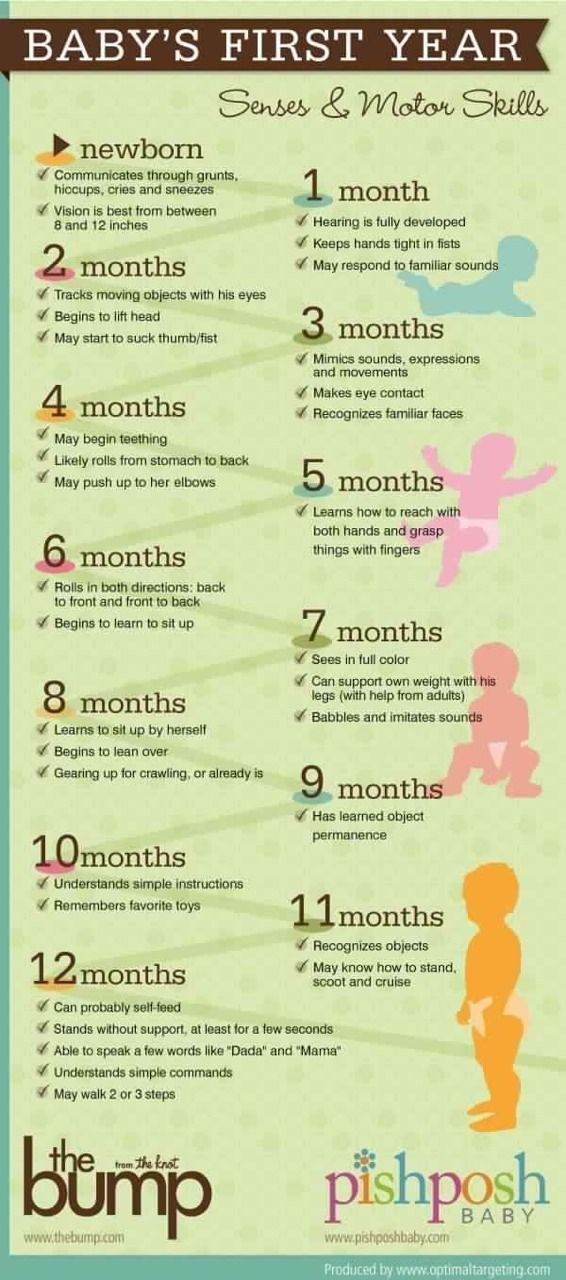 And this is not at all surprising, given that the nipples are not used to such frequent and strong sucking.
And this is not at all surprising, given that the nipples are not used to such frequent and strong sucking.
“Breastfeeding can be uncomfortable for the first couple of days – your body and your baby are just getting used to it. If a baby eats for too long and does not latch well, the sensations are almost the same as from unworn new shoes, Cathy compares. Just as tight shoes can rub your feet, improper suckling can damage your nipples. Prevention is always better than cure, so if the pain persists after a few days of feeding, contact a lactation consultant or healthcare professional.”
Maria, a mother from Canada, agrees: “Although my son seemed to latch onto the breast well, he damaged his nipples while feeding, and I was in pain. As it turned out, the reason was a shortened frenulum of the tongue. The breastfeeding specialists at our city clinic have been of great help in diagnosis and treatment.”
In addition, you may experience period cramps during the first few days after breastfeeding, especially if this is not your first baby.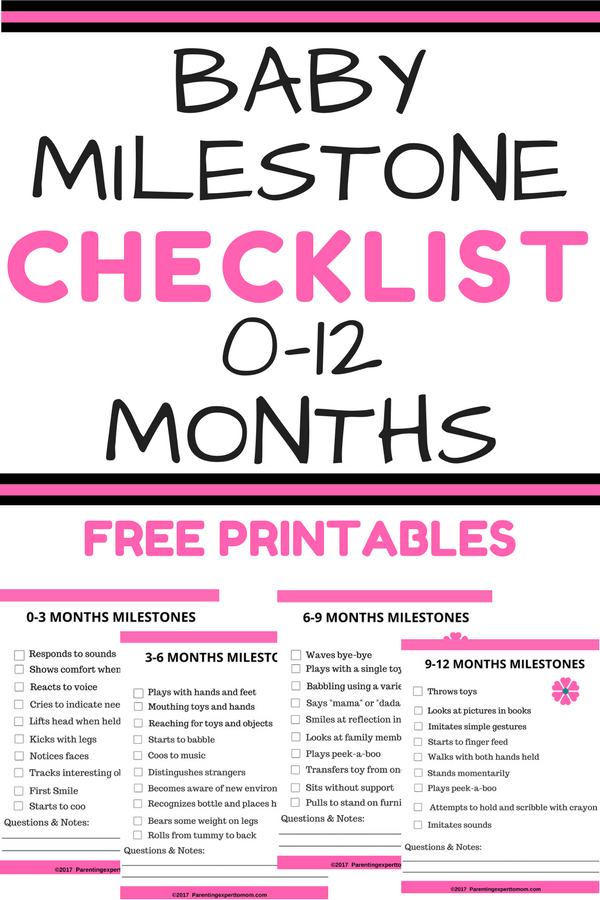 This is the so-called postpartum pain. The fact is that oxytocin, which is released during breastfeeding, contributes to further contraction of the uterus to restore its normal size. 4
This is the so-called postpartum pain. The fact is that oxytocin, which is released during breastfeeding, contributes to further contraction of the uterus to restore its normal size. 4
When milk arrives, the breasts usually become fuller, firmer and larger than before delivery. In some women, the breasts swell, harden and become very sensitive - swelling of the mammary glands occurs. 10 Frequent breastfeeding relieves these symptoms. For more breast care tips, read our article What is Breast Swelling?
How often does the newborn urinate and defecate?
What goes into the body must go back out. Colostrum
has a laxative effect, helping to eliminate meconium - the original feces. It looks a little scary - black and sticky, like tar. 11 But don't worry, it won't always be like this. Breastfed babies usually have a slightly sweet smell of stool.
How many times a day you will need to change diapers and how the contents should look like, see below.
Day one
- Frequency: once or more.
- Colour: greenish black.
- Texture: sticky like tar.
Day two
- Frequency: twice or more.
- Colour: dark greenish brown.
- Texture: less sticky.
Day three
- Frequency: twice or more.
- Colour: greenish brown to brownish yellow.
- Texture: non-sticky.
Fourth day and then the entire first month
- Frequency: twice or more.
- Color: yellow (feces should turn yellow no later than by the end of the fourth day).
- Texture: grainy (like mustard with grains interspersed). Leaky and watery.
The baby's urine should be light yellow. On average, babies urinate once a day for the first two days. Starting around the third day, the number of wet diapers increases to three, and from the fifth day onwards, diapers have to be changed five times a day or more often. In addition, during the first few days, the weight of wet diapers increases. 11
In addition, during the first few days, the weight of wet diapers increases. 11
Is the baby getting enough breast milk?
Since very little milk is produced at first,
You may feel that this is not enough for your baby. But if you feed your baby on demand, you will produce exactly as much milk as he needs. If you want to keep the process under control, be guided by the frequency of diaper changes above. If your baby soils less diapers, check with your doctor.
“For the first three or four weeks, most babies just eat and sleep. If the child is worried and constantly asks for a breast, you should consult with your doctor, ”Katie recommends.
Sometimes the baby may vomit after feeding. If the vomit is the color of milk, this is not a cause for concern. But if there are orange, red, green, brown or black blotches in it, or the child vomits with a "fountain", consult a doctor. You should also consult a doctor if the baby has a high temperature, the fontanel (soft spot on the head) has sunk, blood is found in the stool, and also if the weight recorded at birth has not recovered within two weeks.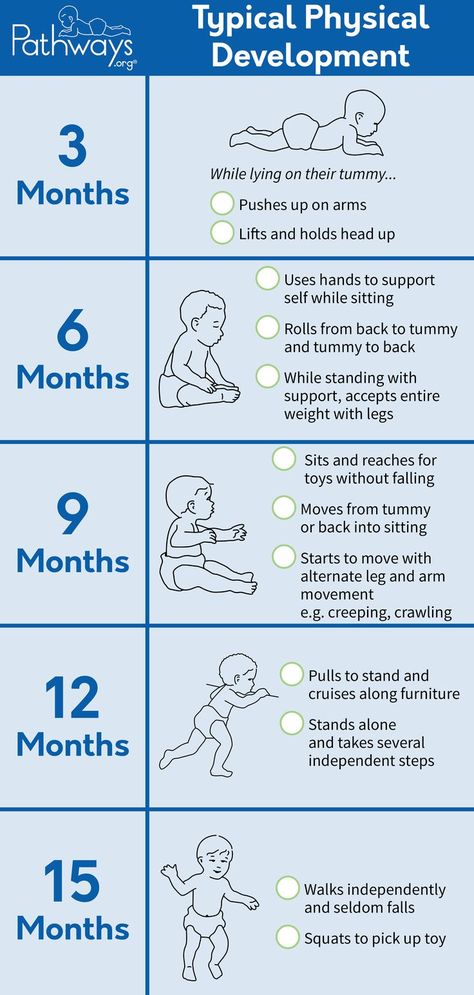 11
11
But if there are no frightening symptoms and the baby is growing at a normal pace, it means that he has enough milk. Soon you will both get used to breastfeeding and establish a more stable routine.
For the next step in breastfeeding, see Breastfeeding in the First Month: What to Expect.
Literature
1 Pang WW, Hartmann PE. Initiation of human lactation: secretory differentiation and secretory activation. J Mammary Gland Biol Neoplasia 2007;12(4):211-221. - Pang, W.W., Hartmann, P.I., "Lactation initiation in the lactating mother: secretory differentiation and secretory activation." G Mammary Gland Biol Neoplasia. 2007;12(4):211-221.
2 Shashi R et al. Postpartum psychiatric disorders: Early diagnosis and management. Indian J Psychiatry . 2015; 57( Suppl 2): S 216– S 221. - Shashi R. et al., Postnatal mental disorders: early diagnosis and treatment. Indian J Saikiatri. 2015; 57(App 2):S216-S221.
2015; 57( Suppl 2): S 216– S 221. - Shashi R. et al., Postnatal mental disorders: early diagnosis and treatment. Indian J Saikiatri. 2015; 57(App 2):S216-S221.
3 Moberg KU, Prime DK. Oxytocin effects in mothers and infants during breastfeeding. Infant . 2013;9(6):201-206. - Moberg K, Prime DK, "The effects of oxytocin on mother and child during breastfeeding." Infant. 2013;9(6):201-206.
4 Sobhy SI, Mohame NA. The effect of early initiation of breast feeding on the amount of vaginal blood loss during the fourth stage of labor. J Egypt Public Health Assoc . 2004;79(1-2):1-12. - Sobhi SI, Moham NA, "Early initiation of breastfeeding and its effect on vaginal bleeding in the fourth stage of labor." G Egypt Public Health Assoc. 2004;79(1-2):1-2.
2004;79(1-2):1-2.
5 Meier PP et al. Which breast pump for which mother: an evidence-based approach to individualizing breast pump technology. J Perinatol . 2016;36(7):493. - Meyer P.P. et al., Breastpump Selection: A Scientific Approach to Customizing Pumping Technology. J Perinatol (Journal of Perinatology). 2016;36(7):493-499.
6 Cadwell K. Latching - On and Suckling of the Healthy Term Neonate: Breastfeeding Assessment. J Midwifery & Women ’ s 2007;52(6):638-642. — Cadwell, K., "Latching and sucking in healthy newborns: evaluation of breastfeeding." W Midwifery Women Health. 2007;52(6):638-642.
7 Kent JC et al. Principles for maintaining or increasing breast milk production. 2012;41(1):114-121. - Kent J.S. et al.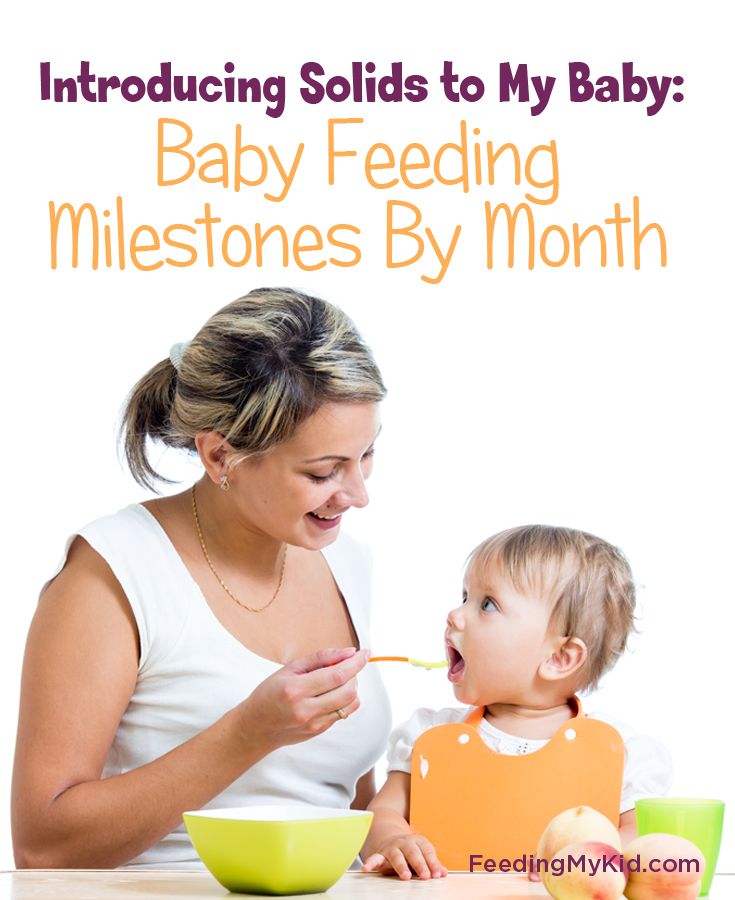 , "Principles for Maintaining and Increasing Milk Production". J Obstet Ginecol Neoneutal Nurs. 2012;41(1):114-121.
, "Principles for Maintaining and Increasing Milk Production". J Obstet Ginecol Neoneutal Nurs. 2012;41(1):114-121.
8 Australian Breastfeeding Association [ Internet ]. Feeding cues ; 2017 Sep [ cited 2018 Feb ]. - Australian Breastfeeding Association [Internet], Feed Ready Signals; September 2017 [cited February 2018]
9 Jacobs A et al. S3-guidelines for the treatment of inflammatory breast disease during the lactation period. Geburtshilfe Frauenheilkd . 2013;73(12):1202-1208. - Jacobs A. et al., "Guidelines S -3 for the management of inflammatory breast disease during breastfeeding." Geburtskhilfe und Frauenheilkünde. 2013;73(12):1202-1208.
10 Lawrence RA, Lawrence RM. Breastfeeding: A guide for the medical profession. 7th ed. Maryland Heights MO, USA: Elsevier Mosby; 2010. 1128 p . - Lawrence R.A., Lawrence R.M., "Breastfeeding: A guide for healthcare professionals." Seventh edition. Publisher Maryland Heights , Missouri, USA: Elsevier Mosby; 2010. P. 1128.
Breastfeeding: A guide for the medical profession. 7th ed. Maryland Heights MO, USA: Elsevier Mosby; 2010. 1128 p . - Lawrence R.A., Lawrence R.M., "Breastfeeding: A guide for healthcare professionals." Seventh edition. Publisher Maryland Heights , Missouri, USA: Elsevier Mosby; 2010. P. 1128.
Breastfeeding for beginners | Philips Avent
search support iconSearch Keywords
Home ›› Beginner Breastfeeding
Home ›› Beginner Breastfeeding
↑ Top
Some of the most common questions about newborns have to do with feeding, which will take up a lot of time during the first few months of a baby's life. In this article, we will discuss all of its main aspects, from the basic principles of breastfeeding to the best tips for effective newborn feeding.
As always, if you have any questions or concerns, seek the opinion of another specialist.
Basic principles of breastfeeding
Although every baby is different, newborns usually eat every two to three hours, for a total of 8 to 12 times a day. In the first one or two days after birth, babies usually drink 25-50 ml of milk per feeding. This volume will gradually increase to 50-75 ml when the baby is about two weeks old.
More information on how much a newborn should eat can be found here.
How long does one feeding last?
Again, every baby is different, so there is no set time frame for every newborn. But in general, breastfeeding a newborn takes five minutes to one hour. This time depends on the size, age of the baby and the frequency and duration of feeding the newborn.
How to start breastfeeding?
In the first minutes of a child's life, the mother should put the baby on her chest and ensure body contact. This time is called the "golden hour": it is at this hour that a connection is established between mother and child and the newborn's natural instinct to seek the breast manifests itself. As soon as the child begins to show signs of hunger, you need to give him a breast.
As soon as the child begins to show signs of hunger, you need to give him a breast.
Mothers who are just learning to breastfeed their newborns should remember that comfort is key. There is no better way to ensure breastfeeding success than by creating a comfortable and relaxing environment for the mother. For starters, mom can sit comfortably on the couch, on the bed, or in a chair with pillows to support her back while feeding. Breastfeeding moms can get creative with breastfeeding and choose specific lighting, soothing music, or anything else that helps them relax.
Bring your baby to your breast, not the other way around. If you want to make breastfeeding a newborn easier, then do not lean towards the baby, but bring it to your chest. The baby's mouth should be opposite the nipple, the neck should be straight, and the shoulders and hips should be in line. Mom can also lightly touch her nipple to her baby's nose and mouth to encourage him to latch on.
Support your chest.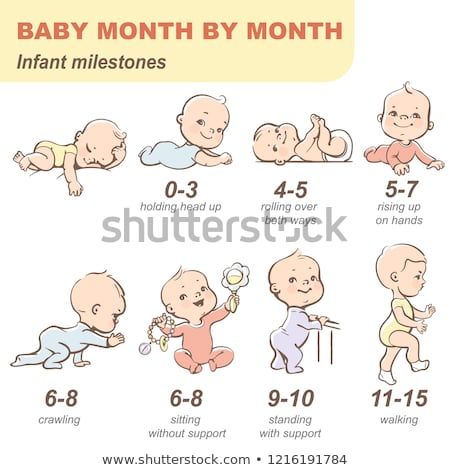 Holding the newborn with one hand, the mother can place the other hand directly under the breast to support it. When learning to breastfeed, some mothers prefer to leave one hand free; in this case, a rolled towel can be used.
Holding the newborn with one hand, the mother can place the other hand directly under the breast to support it. When learning to breastfeed, some mothers prefer to leave one hand free; in this case, a rolled towel can be used.
Breastfeeding can be done in different positions; experiment with them to find the most comfortable for you and your baby. Below we list the most common breastfeeding techniques:
- Cradle. In this position, the baby lies on the mother's hand from the side of the breast, which he sucks. The baby's head lies on the mother's elbow during feeding.
- Cross cradle. With a cross cradle, the mother holds the baby with the hand opposite to the mammary gland that the baby sucks. With the other hand, mom can support her breasts.
- Underhand or Football. In this position, the mother holds the child next to her, putting her back on her arm. With the other hand, she supports the baby's head, facing the mammary gland, with which she feeds the baby.

- Lying on the side. In this position, the mother lies on her side, and the child lies next to her, facing her chest. Mom can support the child under the back with the hand that is on top, or put a folded towel under the back of the child.
Newborn Breastfeeding Tips
After looking at breastfeeding techniques, here are some tips for new mothers:
1. Make sure your baby latch on properly. A good grip is important for both mother and baby. With a good grip, the baby will suck out milk correctly, and the mother's nipples will not hurt. To achieve a good latch, the mother needs to find a position that makes it easier for the newborn to latch onto the breast, and to do this, she should experiment with different positions. If a mother is having difficulty feeding, she should contact a lactation consultant.
2. Maintain milk supply. Sometimes a nursing mother cannot be constantly with her child during feedings. In such cases, it is very important to maintain milk production. An excellent solution for maintaining milk production when mother and baby are not together is pumping milk.
In such cases, it is very important to maintain milk production. An excellent solution for maintaining milk production when mother and baby are not together is pumping milk.
Take a look at this double breast pump: it reduces pumping time and features a massage petal attachment to gently stimulate milk flow.
3. Breastfeeding everywhere. One of the many benefits of breast milk is that mom always has it with her. But some moms feel awkward at first when they have to breastfeed their baby in public. For such mothers, we recommend that you first practice breastfeeding your newborn in front of a mirror and choose clothes that allow you to cover your breasts during feeding. A shawl or scarf can help with this - with them, the mother will feel more comfortable when feeding the baby outside the home.
And to keep clothes dry and clean while breastfeeding, we recommend that mums use these disposable bra pads with a porous and breathable structure: they do not leak and let air through.
Be prepared for difficulties. It is important for moms not to panic or get upset when faced with a common breastfeeding problem, such as insufficient milk production, breast engorgement, clogged milk ducts, mastitis, or sore nipples. To feel calm and confident during all stages of breastfeeding a baby, mothers need a circle of support: family members, friends, and healthcare professionals. The main thing is to stay calm, but if a mother is concerned about any aspect of breast health, she should definitely see a doctor. Learn more about breastfeeding difficulties and how to overcome them.
Articles and tips from Philips Avent
Baby+ app
Download the app and track your baby's development and growth with trackers and keep those special moments forever.
Download app:
Pregnancy+ app
Download one of the world's best pregnancy tracking apps for weekly helpful information, articles and tips about pregnancy and baby development.









